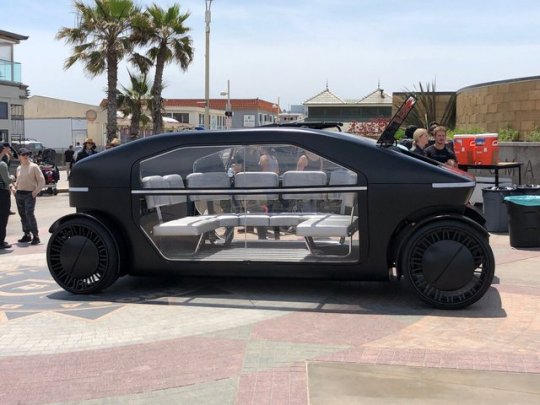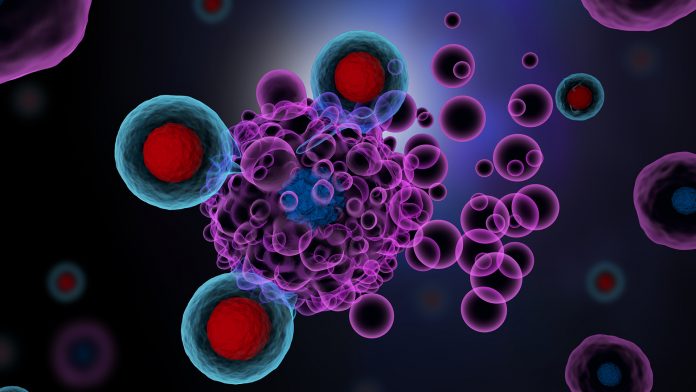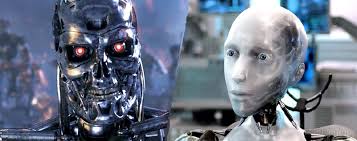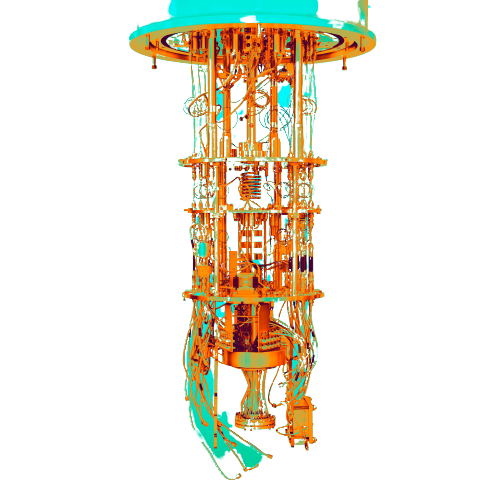Technologies are developing faster than ever these days. Some of them have the potential to change our society comprehensively: e.g. autonomous driving, blockchain, immunotherapy and artificial intelligence. Here are our ten favorites.
1. Autonomous Driving – Mobility without People behind the Wheel
What does autonomous driving mean?
We get in the car and off we go. So far everything is as before. Only the car of the future has no steering wheel and no gas pedal. We don’t have to guide it through traffic ourselves, an intelligent computer system does that. It is only a matter of time before autonomous vehicles dominate the streets. Almost all automotive groups are already developing them. The cars will be able to communicate with each other and thus optimize traffic. This will result in fewer traffic jams, fewer accidents and less air pollution from exhaust fumes.

At first, everyone will probably still have their own copy, but in principle you could share the cars, like today with car sharing: You get into any autonomous vehicle, name the destination and pay for it – either per route or by monthly subscription. Also buses, Trams and trains could be controlled autonomously. Few people will have their own driver’s license in the future. Driving a car independently could be a mere leisure activity that is only allowed on designated routes.
2. Blockchain – Secure Electronic Commerce
An Internet in which sensitive data is completely secure – until recently it was wishful thinking. Blockchain could make it a reality. Most people only know the term in connection with cryptocurrencies such as Bitcoin and Ethereum. Blockchain, however, is a technology that can be used to generally manage data and protect it from cyber attacks. This is due to the functional principle: Each so-called “block” is a list of data records that can be expanded and linked using cryptography (“chain” is English for “chain”).
The blocks contain information about the previous block, a time stamp and transaction data. If a block is modified afterwards, all subsequent blocks also change. Any interventions become visible and can be traced. The technology is perfect for digital currencies. However, it can also be used to exchange and store all possible electronic information. Think of health data, votes, training certificates or tax data. In addition, the method is very reliable: the servers involved are not networked via a node, but with each other, i.e. in a decentralized manner. If an error occurs, each server involved has a copy of the data.
This could change the economy significantly, as it would make electronic trading really secure. The blockchain stores data almost in real time, so that large amounts of current information can be exchanged quickly. Objects, such as autonomous vehicles, can also communicate with each other via the blockchain in the Internet of Things.
3. Genome Editing – Customized People
Determining a person’s appearance and intelligence even before birth sounds like a terrifying vision of the future. The fact is that we’re actually not that far from it. The development of genetic engineering has really picked up speed with the invention of the gene scissors CRISPR-Cas9.
What is the purpose of genome editing?
It can be used to manipulate the genome relatively easily and precisely. This can serve to remove and replace damaged DNA sections, as planned by medical genetic engineering. You can also use genetic scissors to specifically change genetic material and intervene, for example, in the creation process of a living being. This is already practiced in animal laboratories in many laboratories worldwide.
Matt Damon into man and machine in Elysium

In the future, the technology will very likely lead to radical opportunities. On the one hand, diseases can be treated better, on the other hand also optimize people. You could not only adapt your physique and intelligence, but also counteract the aging process. At some point, people will surely exploit the potential of technology. Genetically modified organisms – including humans – will probably be part of everyday life in the future.
4. Nanotechnology – Shaping the World of Atoms and Molecules
The favorite vision of many nanotechnologists are tiny molecular machines that travel around the body and deliver medication to the right place. The physicist Richard Feynman gave a lecture in 1959 with the title “There is plenty of room at the bottom”. He talked about the great potential that lies dormant in the world of molecules and atoms, and laid the foundation for the discipline.
What is Nanotechnology and its Uses?
In the 1990s, quite a few experts believed that nanotechnology would become the key technology of the 21st century. So far, she has not been able to meet these expectations. Nevertheless, the high number of publications that deal with new knowledge and technologies in the nanometer range does not stop. For example, researchers build motors with molecules, store data on DNA strands or create tiny electronic components and sensors.

These nanotechnological inventions can be used in a variety of ways, in medicine, materials science, computer technology and biotechnology. Nanotechnology will therefore certainly shape the world of the future in a comprehensive way.
5. Holograms – copies of reality
We know it from sci-fi films: a realistic, three-dimensional image of the conversation partner suddenly appears in the room. The person moves and can be viewed from all sides. This is a typical hologram for many. In general, the term holography initially refers to a technique in which all information from light waves is stored and then reproduced. This makes it possible to reproduce an object or person realistically afterwards. This is already possible today and is used in art, for example. However, most holograms cannot move.
What exactly is a Hologram?
They cannot be viewed from all sides, but only from the direction from which the light waves were recorded. Researchers around the world are working hard to change that.this magic cube . So far, the apparitions are a maximum of a few centimeters in size and their movements are still very rudimentary. But that will change soon.

6. Immunotherapy – revolution in medicine
Immunotherapy uses the body’s defense system to fight diseases. Above all, it is a great source of hope for cancer and can already boast many successes. For example, American scientists have taken defense cells from blood cancer patients and genetically modified them so that they recognize and combat degenerate cells. They injected these targeted serial killers into the body, which then multiplied in the body and eliminated all cancer cells.
How effective is immunotherapy for cancer?
After the treatment, the patients were completely cancer-free – even those in whom the disease was already very advanced. In another form of immunotherapy, researchers mark the sick cells so that the body’s immune system can better identify them. Doctors still do not use such manipulations of the immune system as a standard treatment. So far, they have not had enough of the sometimes severe side effects under control. However, many doctors agree that immunotherapy will revolutionize medicine.

7. Nuclear Fusion – Highly Efficient Energy Generation
Nuclear fusion research aims to generate energy in a manner similar to that of the sun. In the fusion process, two atomic nuclei merge into one. In the sun, about two hydrogen nuclei fuse to form a helium nucleus. This usually releases a large amount of energy. Researchers have been trying to generate energy in this way since the mid-20th century. But the technical challenges are gigantic because you need an extremely high heat and a very high pressure. The process also poses great risks because it can quickly get out of control. It also releases dangerous neutron radiation that has to be shielded sufficiently.
Many hope for the experimental nuclear fusion reactor ITER in France, which according to the current status is to carry out the first realistic tests in the 2030s. Scientists want to use a magnetic field to trap a plasma in the system. This would create the pressure and heat needed to fuse hydrogen nuclei. Even if the development of technology is slow, many experts are convinced that it is only a matter of time before “fusion power” comes out of the socket for the first time. Since fossil fuels will soon become scarce, nuclear fusion could complement the generation of energy from renewable sources. until »fusion current« comes out of the socket for the first time. Since fossil fuels will soon become scarce, nuclear fusion could complement the generation of energy from renewable sources. until »fusion current« comes out of the socket for the first time. Since fossil fuels will soon become scarce, nuclear fusion could complement the generation of energy from renewable sources.
8. Artificial Intelligence – Competition for Homo sapiens
What exactly is Artificial Intelligence?
Artificial intelligence, or AI for short, is what we mean by computer programs that learn independently and are therefore always “smarter”. In this context, intelligence usually means that the AI can do certain tasks particularly well – such as playing strategy games or recognizing faces in photos.

The AI continues to develop this ability through its self-learning behavior until the program finally masters it far better than a person. AI is already used in certain areas today, including image recognition and data analysis. However, AI research is moving away from specific problem solving towards comprehensive artificial intelligence that can learn everything in principle. To do this, scientists use systems that work similarly to our brain’s neural network. AI will take decisions away from people in many areas of everyday life. But what if it will be superior to its creators in many – or even all – areas? You don’t want to imagine how such a scenario could end. Therefore, you should also keep an eye on the potential dangers when you exploit the possibilities of AI.
9. Quantum computers – new standards in the data world
The idea came up at the beginning of the 1980s: a computer whose computing unit can not only assume the two values 0 and 1 (as is the case with conventional bits), but also to a certain extent any value in between. Such a system can explode the computing power. To implement so-called qubits, quantum mechanical two-state systems are required. These are systems that are not only in one of their two states, but in any superposition, also called superpositions. One example is the spin of an electron, another is the energy level of atoms or molecules. The tricky thing is that it is very difficult to control such quantum systems. In addition, many such qubits must be interconnected for a sensible application. Researchers around the world are working intensively on solutions. In fact, they already built small “quantum computers” in which they combined a few qubits.

What can a quantum computer do?
This enabled them to demonstrate that such systems are significantly more powerful than conventional computers. Nevertheless, the prototypes have only solved very special problems so far, so they cannot replace normal computers. Skeptics even believe that quantum-based computers will never leave the lab. Other experts suspect that technology will revolutionize current information technology. In addition, quantum computers could also completely describe the world of quantum for the first time and thus decode themselves in a certain way. in which they combined a few qubits. This enabled them to demonstrate that such systems are significantly more powerful than conventional computers. Nevertheless, the prototypes have only solved very special problems so far, so they cannot replace normal computers. Skeptics even believe that quantum-based computers will never leave the lab. Other experts suspect that technology will revolutionize current information technology.
In addition, quantum computers could also completely describe the world of quantum for the first time and thus decode themselves in a certain way. in which they combined a few qubits. This enabled them to demonstrate that such systems are significantly more powerful than conventional computers. Nevertheless, the prototypes have only solved very special problems so far, so they cannot replace normal computers. Skeptics even believe that quantum-based computers will never leave the lab. Other experts suspect that technology will revolutionize current information technology. In addition, quantum computers could also completely describe the world of quantum for the first time and thus decode themselves in a certain way.
Skeptics even believe that quantum-based computers will never leave the lab. Other experts suspect that technology will revolutionize current information technology. In addition, quantum computers could also completely describe the world of quantum for the first time and thus decode themselves in a certain way. Skeptics even believe that quantum-based computers will never leave the lab. Other experts suspect that technology will revolutionize current information technology. In addition, quantum computers could also completely describe the world of quantum for the first time and thus decode themselves in a certain way.
10. Virtual Reality – A Second Reality
You put on your glasses and you’re suddenly in another world: welcome to virtual reality! The previous applications of this technology are usually limited to video games and film projects. However, the virtual world will soon become an integral part of our everyday life because the technology is developing rapidly. The generations to come will probably spend a significant part of their time in virtual worlds.
There you will complete tasks, learn new skills and pursue certain, including sexual, pleasures. Companies could make products palatable to their customers in virtual reality. Customers should try them out and look around the virtual shop as they please. IKEA’s virtual environmentis a first example of this. Employers are expected to train their employees in virtual reality so that they can learn to use new machines, for example. Augmented Reality in particular could play an important role. It consists of a real environment with virtual elements.
For example, in augmented reality, information about objects or operating instructions for devices can be shown in the field of vision. To make the experience in the virtual world even more realistic, scientists are researching to generate haptic feedback in the air – for example, through standing ultrasonic waves. So you could not only see the virtual things, but also feel them. At the latest when you can immerse yourself in such a virtual reality with a pair of contact lenses, it will compete with the real world – whether we like it or not.































Discussion about this post